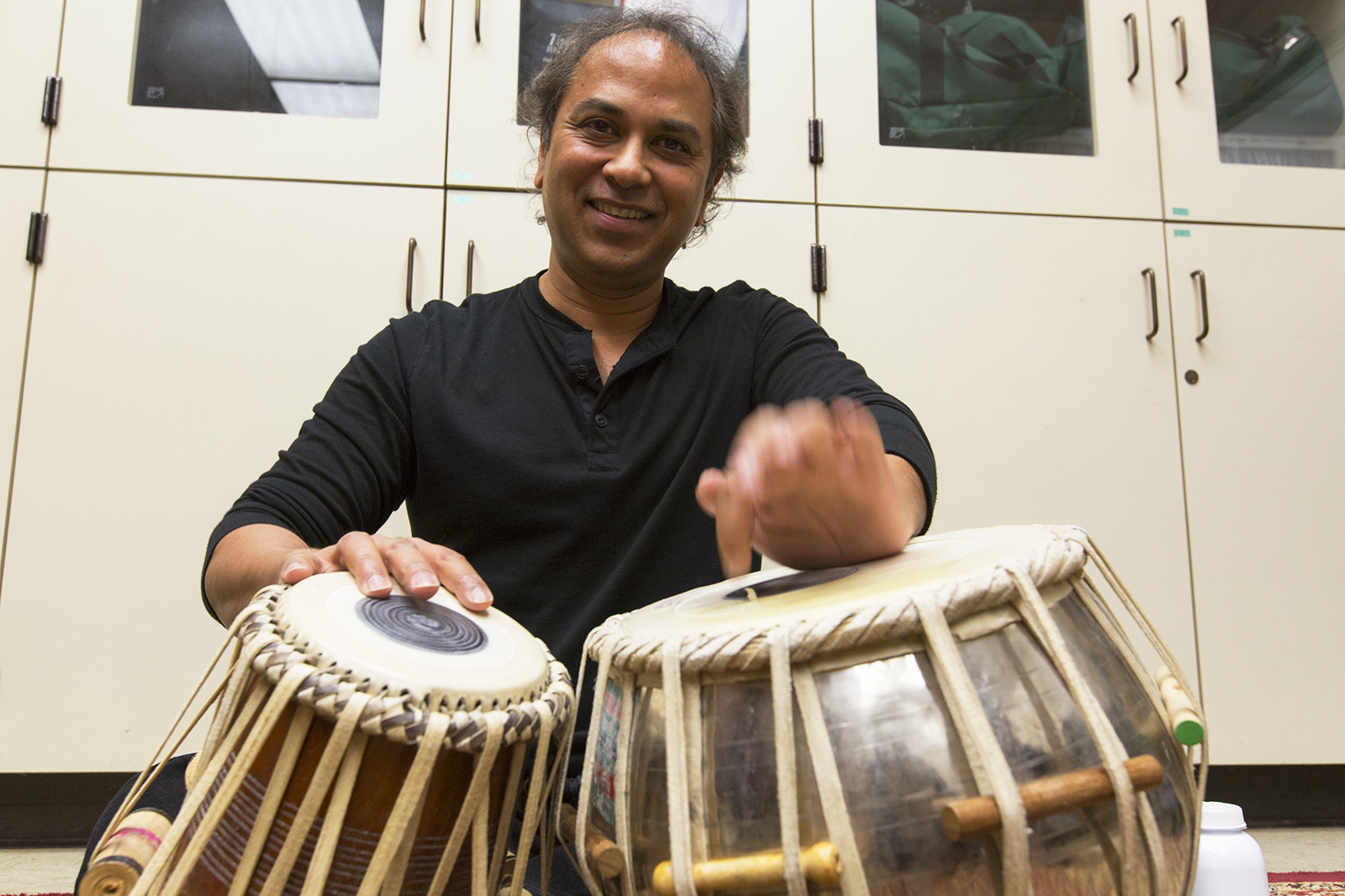Sounds of Schoenberg: The Indian tabla

Abhiman Kaushal learned to love tabla as a 10-year-old boy in India after a tabla master took him on as an apprentice. Now, Kaushal teaches in the enthnomusicology department at UCLA and owns 14 sets of the drums. (Keila Mayberry/Daily Bruin staff)
By Shreya Aiyar
Oct. 23, 2015 12:43 a.m.
Each week, Daily Bruin A&E will explore the instruments of the World Musical Instrument Collection and their performers that all contribute to the musical landscape of the UCLA Herb Alpert School of Music. This week, we highlight the Indian tabla, a set of two small drums used in solos or as accompaniment.
Ten-year-old Abhiman Kaushal squirmed restlessly as his father attempted to guide his fingers through a rhythmic tapping sequence on the “tabla,” an Indian drum set.
The young boy took his father’s teachings for granted and didn’t practice at home. Luckily, a tabla master named Ustad Sheikh Dawood lived close to Kaushal in the city of Hyderabad, India. Soon after becoming an apprentice, a milestone signified by tying a knotted thread around the student’s wrist, Kaushal learned to love the tabla and make the music his own.
“He had taken me on,” Kaushal, now an adjunct associate ethnomusicology professor and a professional tabla performer, said. “I was learning from him for the rest of his life.”
The tabla is a set of two drums, one larger than the other. The smaller drum, normally made of wood, is tuned to a certain note to match the pitch of the main instrument. The larger drum is made of nickel-plated copper and backs the complex rhythms with resonant bass effects.
Goatskin is stretched over the head of the drums to aid flexibility. In the middle of the head lies the “syahi,” the part the drummer strikes to produce the sound. Kaushal said tabla makers use rice paste and iron filings to make the syahi, which is then layered on top of the drum in perfect concentric circles to allow the sound to penetrate through the air.
Kaushal said he owns 14 sets of tablas, each tuned to one note in the musical scale to accommodate a range of pitches. His tablas are created to his specifications by a tabla maker in Hyderabad, who comes from a family of tabla makers spanning seven generations.
When he needs a new tabla, he enters the shop and plays beats for the tabla maker. The tabla maker watches his performance style carefully, noting the force with which Kaushal strikes the head of the drum. According to how hard Kaushal hits the drums, the tabla maker customizes the parts to fit Kaushal’s hands and to produce the clearest sound.
Kaushal credits the opportunity to spread appreciation of world music among his students to his tabla. Many of them send him photos of Indian music festivals all over the world and remain in touch with him.
“(My students) say, ‘Hey professor, we went to this (tabla performance) and thought of you,'” Kaushal said. “It’s very touching, and it’s all because of these instruments.”


